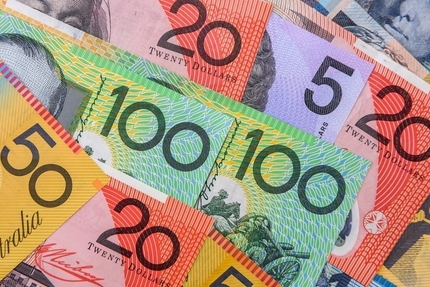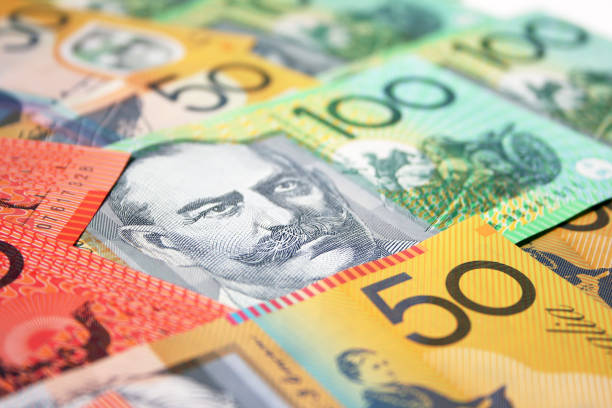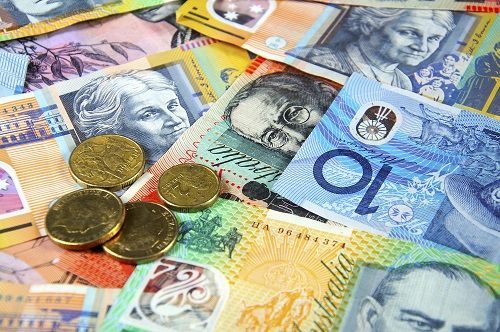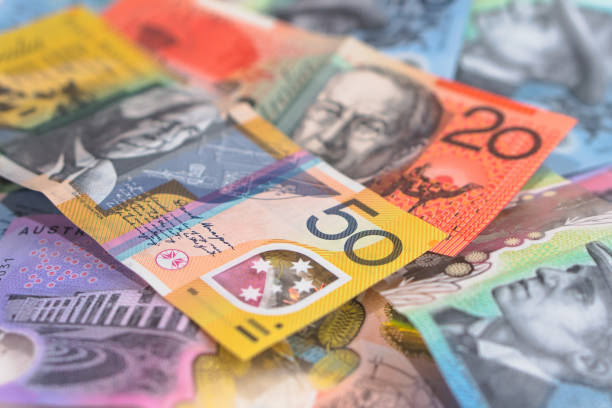Australian Dollar remains solid following the soft Consumer Inflation Expectations

- The AUD/USD pair edges higher following the remarks from former RBA Governor Bernie Fraser.
- Bernie Fraser criticized the RBA board for being overly focused on inflation at the expense of the job market.
- Australia’s Consumer Inflation Expectations eased to 4.4% in September, down slightly from August's four-month high of 4.5%.
The AUD/USD pair gains ground following soft Consumer Inflation Expectations from Australia released on Thursday. Additionally, the former Reserve Bank of Australia (RBA) Governor Bernie Fraser criticized the current RBA board for being overly focused on inflation at the expense of the job market. Fraser suggested that the Board should lower the cash rate, warning of "recessionary risks" that could have severe consequences for employment.
The Australian Dollar (AUD) gained support against the US Dollar (USD) as improved risk sentiment followed the release of the US inflation report on Wednesday. The August’s US Consumer Price Index (CPI) data showed that headline inflation dropped to a three-year low, although core inflation exceeded expectations. This development has heightened the likelihood that the Federal Reserve (Fed) will begin its easing cycle with a 25-basis points interest rate cut in September.
On Wednesday, Sarah Hunter, the Reserve Bank of Australia's (RBA) Assistant Governor for Economics, remarked that high interest rates are suppressing demand, which is expected to lead to a mild economic downturn. Hunter also pointed out that the labor market remains tight relative to full employment levels, with employment growth projected to continue, though slower than population growth, according to Reuters.
Daily Digest Market Movers: Australian Dollar holds ground due to improved risk sentiment
- According to the CME FedWatch Tool, markets are fully anticipating at least a 25 basis point (bps) rate cut by the Federal Reserve at its September meeting. The likelihood of a 50 bps rate cut has sharply decreased to 15.0%, down from 44.0% a week ago.
- Australia’s Consumer Inflation Expectations eased to 4.4% in September, down slightly from August's four-month high of 4.5%. This decline highlights the central bank's efforts to strike a balance between bringing inflation down within a reasonable timeframe and maintaining gains in the labor market.
- US Consumer Price Index dipped to 2.5% year-on-year in August, from the previous reading of 2.9%. The index has fallen short of the expected 2.6% reading. Meanwhile, headline CPI stood at 0.2% MoM.
- US core CPI ex Food & Energy, remained unchanged at 3.2% YoY. On a monthly basis, core CPI rose to 0.3% from previous 0.2% reading.
- The first US presidential debate between former President Donald Trump and Democratic nominee Kamala Harris in Pennsylvania was won by Harris, according to a CNN poll. The debate began with a critical focus on the economy, inflation, and economic policies.
- Morgan Stanley's Chief China Economist, Robin Xing, stated that China is undoubtedly experiencing deflation, likely in the second stage of the process. Xing noted that Japan's experience suggests that the longer deflation persists, the greater the need for China to implement significant stimulus measures to overcome the debt-deflation challenge, per Business Standard.
- Australia's Westpac Consumer Confidence fell by 0.5% month-on-month in September, swinging from a 2.8% gain in August.
- China's Trade Balance reported a trade surplus of CNY 649.34 billion for August, increasing from the previous reading of CNY 601.90 billion. Meanwhile, China's Exports (CNY) increased by 8.4% year-on-year, following the previous rise of 6.5%.
Technical Analysis: Australian Dollar moves above 0.6650; next barrier at the nine-day EMA
The AUD/USD pair trades near 0.6680 on Thursday, with technical analysis of the daily chart indicating that it remains within a descending channel, signaling a bearish bias. The 14-day Relative Strength Index (RSI) remains below the 50 level, confirming the ongoing bearish trend.
On the downside, the AUD/USD pair could target the lower boundary of the descending channel around 0.6600. A break below this level may strengthen the bearish outlook, potentially driving the pair toward the throwback support zone near 0.6575.
On the upside, the AUD/USD pair may face resistance around the nine-day Exponential Moving Average (EMA) at 0.6694, followed by the upper boundary of the descending channel near 0.6720. A break above this upper boundary could diminish the bearish bias, potentially opening the door for the pair to retest its seven-month high of 0.6798, last seen on July 11.
AUD/USD: Daily Chart

Australian Dollar PRICE Today
The table below shows the percentage change of Australian Dollar (AUD) against listed major currencies today. Australian Dollar was the strongest against the Japanese Yen.
| USD | EUR | GBP | JPY | CAD | AUD | NZD | CHF |
|---|---|---|---|---|---|---|---|---|
USD |
| -0.00% | 0.03% | 0.10% | 0.00% | -0.10% | 0.02% | -0.03% |
EUR | 0.00% |
| 0.03% | 0.13% | 0.02% | -0.09% | 0.04% | -0.04% |
GBP | -0.03% | -0.03% |
| 0.00% | -0.02% | -0.13% | 0.00% | -0.08% |
JPY | -0.10% | -0.13% | 0.00% |
| -0.12% | -0.22% | -0.11% | -0.16% |
CAD | -0.01% | -0.02% | 0.02% | 0.12% |
| -0.09% | 0.02% | -0.06% |
AUD | 0.10% | 0.09% | 0.13% | 0.22% | 0.09% |
| 0.13% | 0.04% |
NZD | -0.02% | -0.04% | -0.00% | 0.11% | -0.02% | -0.13% |
| -0.08% |
CHF | 0.03% | 0.04% | 0.08% | 0.16% | 0.06% | -0.04% | 0.08% |
|
The heat map shows percentage changes of major currencies against each other. The base currency is picked from the left column, while the quote currency is picked from the top row. For example, if you pick the Australian Dollar from the left column and move along the horizontal line to the US Dollar, the percentage change displayed in the box will represent AUD (base)/USD (quote).
Australian Dollar FAQs
What key factors drive the Australian Dollar?
One of the most significant factors for the Australian Dollar (AUD) is the level of interest rates set by the Reserve Bank of Australia (RBA). Because Australia is a resource-rich country another key driver is the price of its biggest export, Iron Ore. The health of the Chinese economy, its largest trading partner, is a factor, as well as inflation in Australia, its growth rate and Trade Balance. Market sentiment – whether investors are taking on more risky assets (risk-on) or seeking safe-havens (risk-off) – is also a factor, with risk-on positive for AUD.
How do the decisions of the Reserve Bank of Australia impact the Australian Dollar?
The Reserve Bank of Australia (RBA) influences the Australian Dollar (AUD) by setting the level of interest rates that Australian banks can lend to each other. This influences the level of interest rates in the economy as a whole. The main goal of the RBA is to maintain a stable inflation rate of 2-3% by adjusting interest rates up or down. Relatively high interest rates compared to other major central banks support the AUD, and the opposite for relatively low. The RBA can also use quantitative easing and tightening to influence credit conditions, with the former AUD-negative and the latter AUD-positive.
How does the health of the Chinese Economy impact the Australian Dollar?
China is Australia’s largest trading partner so the health of the Chinese economy is a major influence on the value of the Australian Dollar (AUD). When the Chinese economy is doing well it purchases more raw materials, goods and services from Australia, lifting demand for the AUD, and pushing up its value. The opposite is the case when the Chinese economy is not growing as fast as expected. Positive or negative surprises in Chinese growth data, therefore, often have a direct impact on the Australian Dollar and its pairs.
How does the price of Iron Ore impact the Australian Dollar?
Iron Ore is Australia’s largest export, accounting for $118 billion a year according to data from 2021, with China as its primary destination. The price of Iron Ore, therefore, can be a driver of the Australian Dollar. Generally, if the price of Iron Ore rises, AUD also goes up, as aggregate demand for the currency increases. The opposite is the case if the price of Iron Ore falls. Higher Iron Ore prices also tend to result in a greater likelihood of a positive Trade Balance for Australia, which is also positive of the AUD.
How does the Trade Balance impact the Australian Dollar?
The Trade Balance, which is the difference between what a country earns from its exports versus what it pays for its imports, is another factor that can influence the value of the Australian Dollar. If Australia produces highly sought after exports, then its currency will gain in value purely from the surplus demand created from foreign buyers seeking to purchase its exports versus what it spends to purchase imports. Therefore, a positive net Trade Balance strengthens the AUD, with the opposite effect if the Trade Balance is negative.




